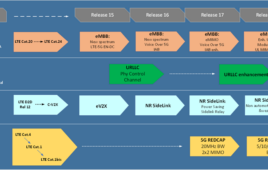LOS ANGELES (AP) — Officers are being briefed during roll calls, new procedures are in place, and prosecutors are considering the effect on potentially thousands of pending court cases after the Supreme Court’s ruling that restricts police searches of cellphones.
From Los Angeles to New York, and in San Diego, Chicago and Houston, officials met to discuss Wednesday’s unanimous ruling that could make it harder for officers to quickly find incriminating evidence. The ruling prohibits law enforcement from searching an arrestee’s cellphone without a warrant unless a person’s safety or life may be in danger.
Because cellphone technology has so rapidly advanced over the last decade, more information than ever before — including personal documents, photos and emails — is now stored on these devices. For investigators, they can be a treasure trove of suspects’ pictures with fellow gang members, not to mention text messages and call records that help police find accomplices or victims.
Few, if any, in law enforcement circles were surprised by the high court’s ruling, and they said many cautious investigators were already getting warrants to ensure evidence doesn’t get tossed out of trials. But they also universally acknowledged that it would make their jobs more difficult, especially for the rank-and-file patrol officer.
“It’s going to be more cumbersome, it’s going to take more work, it’s going to take more time,” said Los Angeles County sheriff’s Lt. Kent Wegener, of the Major Crimes Bureau. Wegener said his investigators routinely seek search warrants for their cases.
In Houston, prosecutors were already treating cellphones as personal property with privacy rights and advising police officers that if they weren’t given permission, they’d need a search warrant to access the devices, said Bill Exley, a prosecutor in the Harris County district attorney’s office.
The Constitution’s Fourth Amendment requires police generally to have a judge sign a warrant that’s based on “probable cause,” or evidence that a crime has been committed. But cellphones have been treated like any other item in an arrestee’s possession, meaning they could be examined to ensure the officer’s safety and prevent the destruction of evidence.
The Supreme Court’s decision examined two cases that arose after arrests in San Diego and Boston. In San Diego, police found indications of gang membership when they looked through a defendant’s smartphone, and prosecutors used video and photographs from the phone to persuade a jury to convict him of attempted murder and other charges. In Boston, police used the call log on an arrested man’s flip phone to lead them to his home, where they found drugs, a gun and ammunition.
Thousands of pending court cases could be altered or dropped because of what would now be considered illegally obtained evidence as a result of the decision, said Oregon defense attorney Bronson James, who authored an amicus brief for the plaintiffs. Whether that’ll happen is unclear, and prosecutors are working to limit the case’s retroactive impact.
The ruling may also ultimately challenge law enforcement’s use of other technology, James said, such as the U.S. government’s bulk data collection or the “Stingray,” a device that sweeps up cellphone data in a given area.
It can take anywhere from a few hours for a judge to sign off on a state search warrant to a few days for a federal one.
Though the ruling provides leeway for situations where a person’s safety or life is in danger, authorities have concerns about whether information or opportunities might be missed. The San Diego County district attorney’s office has had conversations with law enforcement on how to expedite search warrant requests when only a couple judges might be on call at night or over the weekend.
San Diego County’s chief deputy district attorney, Summer Stephan, said human traffickers often run their businesses from their cellphones, arranging prices and schedules for girls and customers by text message.
Though the ruling allows for emergency situations, “sometimes you don’t know if you have that until you look,” Stephan said. “You don’t know if the girl you were already able to rescue is the only girl until you look at the phone and see if there’s communication with another girl.”
The decision addresses worries that information may be erased remotely, allowing police to seize the cellphone and turn it off or remove its battery. Police can also place it in a special bag to isolate it from radio waves.
Many departments, including Michigan State Police, are already giving those bags to officers, said Douglas Godfrey, a former Kings County, New York, prosecutor. But the bags aren’t necessarily distributed widely to patrol officers or in great supply. Such new measures would require a financial investment and training.
“It certainly is true that if the police are just allowed to rummage through the cellphone of any arrestee without a warrant they can find all kinds of things that might be helpful,” said David Sklansky, a UC Berkeley law professor who’s written on Fourth Amendment issues. “The court recognizes that, but the court says that privacy is not costless. Sometimes honoring the Constitution means that law enforcement does not have advantages that it otherwise would have.”




